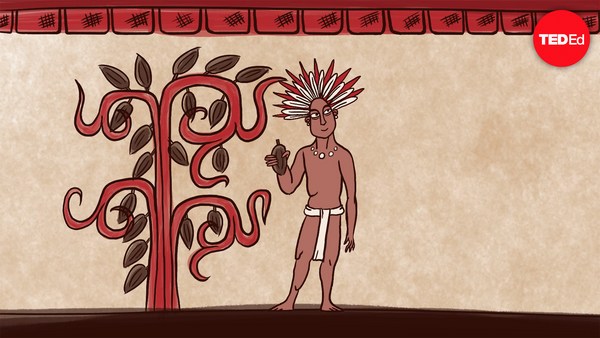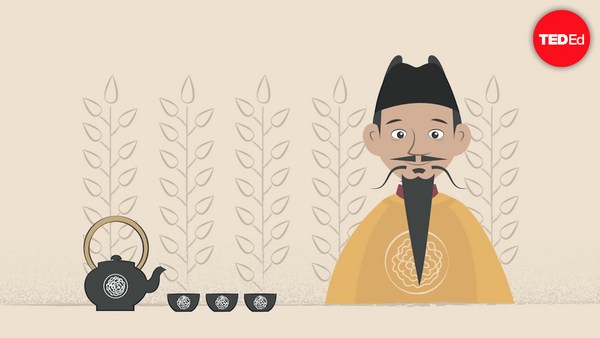This chimpanzee stumbles across a windfall of overripe plums. Many of them have split open, drawing him to their intoxicating fruity odor. He gorges himself and begins to experience some… strange effects. This unwitting ape has stumbled on a process that humans will eventually harness to create beer, wine, and other alcoholic drinks.
The sugars in overripe fruit attract microscopic organisms known as yeasts. As the yeasts feed on the fruit sugars they produce a compound called ethanol— the type of alcohol in alcoholic beverages. This process is called fermentation. Nobody knows exactly when humans began to create fermented beverages. The earliest known evidence comes from 7,000 BCE in China, where residue in clay pots has revealed that people were making an alcoholic beverage from fermented rice, millet, grapes, and honey.
Within a few thousand years, cultures all over the world were fermenting their own drinks. Ancient Mesopotamians and Egyptians made beer throughout the year from stored cereal grains. This beer was available to all social classes, and workers even received it in their daily rations. They also made wine, but because the climate wasn’t ideal for growing grapes, it was a rare and expensive delicacy.
By contrast, in Greece and Rome, where grapes grew more easily, wine was as readily available as beer was in Egypt and Mesopotamia. Because yeasts will ferment basically any plant sugars, ancient peoples made alcohol from whatever crops and plants grew where they lived. In South America, people made chicha from grains, sometimes adding hallucinogenic herbs. In what’s now Mexico, pulque, made from cactus sap, was the drink of choice, while East Africans made banana and palm beer. And in the area that’s now Japan, people made sake from rice. Almost every region of the globe had its own fermented drinks.
As alcohol consumption became part of everyday life, some authorities latched onto effects they perceived as positive— Greek physicians considered wine to be good for health, and poets testified to its creative qualities. Others were more concerned about alcohol’s potential for abuse. Greek philosophers promoted temperance. Early Jewish and Christian writers in Europe integrated wine into rituals but considered excessive intoxication a sin. And in the middle east, Africa, and Spain, an Islamic rule against praying while drunk gradually solidified into a general ban on alcohol.
Ancient fermented beverages had relatively low alcohol content. At about 13% alcohol, the by-products wild yeasts generate during fermentation become toxic and kill them. When the yeasts die, fermentation stops and the alcohol content levels off. So for thousands of years, alcohol content was limited. That changed with the invention of a process called distillation. 9th century Arabic writings describe boiling fermented liquids to vaporize the alcohol in them. Alcohol boils at a lower temperature than water, so it vaporizes first. Capture this vapor, cool it down, and what’s left is liquid alcohol much more concentrated than any fermented beverage.
At first, these stronger spirits were used for medicinal purposes. Then, spirits became an important trade commodity because, unlike beer and wine, they didn’t spoil. Rum made from sugar harvested in European colonies in the Caribbean became a staple for sailors and was traded to North America. Europeans brought brandy and gin to Africa and traded it for enslaved people, land, and goods like palm oil and rubber. Spirits became a form of money in these regions.
During the Age of Exploration, spirits played a crucial role in long distance sea voyages. Sailing from Europe to east Asia and the Americas could take months, and keeping water fresh for the crews was a challenge. Adding a bucket of brandy to a water barrel kept water fresh longer because alcohol is a preservative that kills harmful microbes.
So by the 1600s, alcohol had gone from simply giving animals a buzz to fueling global trade and exploration— along with all their consequences. As time went on, its role in human society would only get more complicated.


